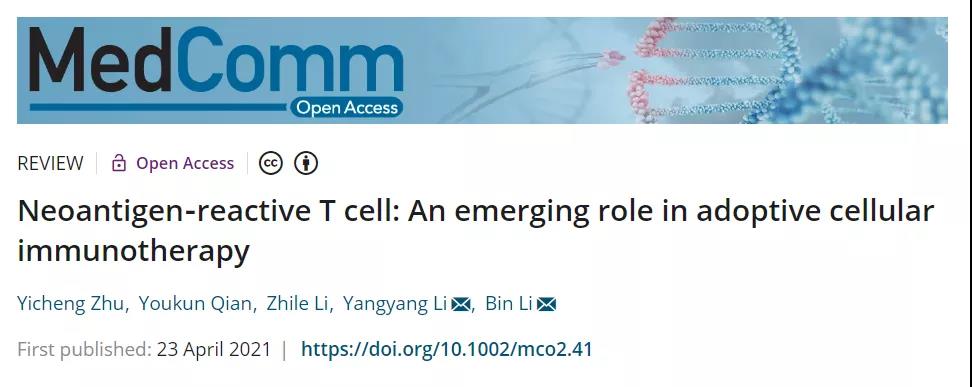MedComm | Neoantigen-reactive T cell: An emerging role in adoptive cellular immunotherapy

Open the phone and scan
Adoptive cellular immunotherapy harnessing the intrinsic immune system for precise treatment has exhibited preliminary success against malignant tumors. As one of the emerging roles in adoptive cellular immunotherapy, neoantigen-reactive T cell (NRT) focuses on the antigens expressed only by tumor cells. It exclusively obliterates tumor and spares normal tissues, achieving more satisfying effects. However, the development of NRT immunotherapy remains in a relatively primitive stage. Current challenges include identification of NRTs and maintenance of adoptive cell efficacy in vivo. The possible side effects and other limitations of this treatment also hinder its application. Here, authors present an overview of NRT immunotherapy and discuss the progress and challenges as well as the prospects in this promising field.

Malignant tumors have elevated to the second leading cause of disability-adjusted life years. In recent years, immunotherapy has stepped onto the center stage, which harnesses the immune system to fight against tumors. The spontaneous antitumor immune responses indicate the opportunities for intervention, including removing immunosuppression to restore antitumor effects such as immune checkpoint blockade (ICB), and using cancer vaccines to stimulate the body to attack tumors. Adoptive T-cell therapy (ACT) is also an important part of immunotherapy. It works by extracting and screening specific T lymphocytes, then infusing them back after modification and amplification to mediate the tumor-killing activity. Some currently used ACTs, such as chimeric antigen receptor T-cell therapy (CAR-T), exert the therapeutic actions by targeting antigens on the surface of tumor cells. These approaches have demonstrated excellent performance in hematologic tumors, but not so well in solid tumors, possibly incriminating the nonspecial targets or limited number of surface antigens.
Therefore, neoantigens that are only expressed in tumor cells are research hotspots. With the latest advances in deep sequencing, machine learning prediction algorithms, and synthetic biology, many neoantigen-reactive T cell (NRT)-based immunotherapy modalities are launched. These recruits prevent the attacks on normal tissues caused by the nonspecificity (off-target effect) and broaden the target spectrum as well. Attracted by its huge prospects, clinical trials focusing on a wide range of tumors are carried out in full swing. It has been shown in recent clinical trials that metastatic breast cancer and colorectal cancer patients obtained objective remission after the administration of NRTs.
Despite the variety of forms, NRT immunotherapy can be disassembled into a few basic procedures: pinpointing the neoantigen and the reactive T cells, modifying them in vitro as needed, and reinfusing them back to the patient (Fig.1). However, due to the limited progress of the current study, our understanding of NRT therapy is still in the darkroom. Although some positive results bring us light, we should be soberly aware that there are many obstacles to be overcome. In this review, we introduce and analyze the general aspects of NRT therapy, discuss the potential challenges of each part, and summarize the latest progress in related fields.

Fig.1 Basic procedures of neoantigen-reactive T cell immunotherapy
Article Access: https://onlinelibrary.wiley.com/doi/10.1002/mco2.41
Website for MedComm: https://onlinelibrary.wiley.com/journal/26882663
Looking forward to your contributions.


